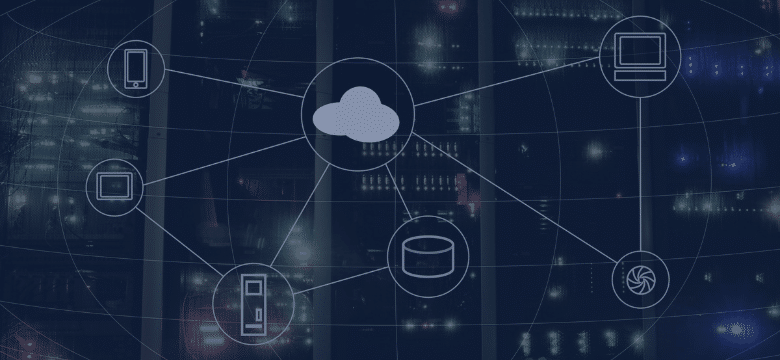In the rapidly evolving digital landscape, the Internet of Things (IoT) is emerging as a transformative force, revolutionizing industries across the board. The banking sector is no exception, as financial institutions increasingly recognize the potential of IoT technology to enhance customer experiences, streamline operations, and unlock new revenue streams. By integrating IoT devices and sensors into their services, banks can reimagine the way customers interact with their finances, paving the way for a more personalized, efficient, and secure banking future.
1. Reimagining the Banking Experience: Benefits of IoT
The integration of IoT technology into banking services offers a myriad of benefits that can profoundly transform the customer experience:
- Enhanced Personalization: IoT devices can collect and analyze vast amounts of data on customer behavior and preferences, enabling banks to tailor their services and offerings to individual needs.
- Streamlined Transactions: With IoT-enabled devices, customers can seamlessly conduct transactions, such as contactless payments or automatic bill payments, without the need for traditional banking channels.
- Predictive Analytics: By harnessing the power of IoT data, banks can leverage advanced analytics and machine learning to anticipate customer needs, identify emerging trends, and make data-driven decisions.
- Improved Security: IoT devices can provide additional layers of security, such as biometric authentication or location-based access controls, enhancing the overall security of banking operations.
- Real-Time Fraud Detection: IoT sensors and connected devices can continuously monitor activity, enabling banks to detect and respond to suspicious or fraudulent behavior in real time.
- Automated Financial Management: IoT-enabled smart home devices can track household expenses and consumption patterns, empowering customers to manage their finances more efficiently.
Learn more about IoT’s technology: Exploring the Benefits and Applications of Internet of Things (IoT)
2. Unveiling the Use Cases: IoT in Action
The potential applications of IoT technology in the banking sector are vast and diverse. Here are a few practical use cases that illustrate the transformative power of IoT:
- Smart wearables for contactless payments: Imagine paying for your groceries with a simple tap of your smartwatch or fitness tracker at an equipped payment terminal, eliminating the need for physical cards or cash.
- Smart home devices and automated payments: IoT-enabled smart meters and home automation systems can automatically deduct utility bill payments based on real-time energy consumption data, streamlining the payment process for customers.
- Connected cars and insurance optimization: By leveraging data from connected cars, banks can offer personalized car insurance plans tailored to individual risk profiles based on driving habits, mileage, and vehicle diagnostics.
- IoT-enabled fraud detection: With IoT devices linked to bank accounts, customers can receive instant alerts on their smartphones or connected devices when suspicious activity is detected, enabling prompt action and mitigating potential losses.
Want to build your own IoT system? Check this out 👉 Next-gen IoT services
3. Security Concerns and Ethical Considerations
While the benefits of IoT integration in banking services are numerous, it is crucial to address potential security challenges and ethical considerations:
- Data privacy concerns: As IoT devices collect and transmit sensitive personal and financial data, robust data privacy measures must be implemented to protect customer information and comply with regulations.
- Vulnerability to cyberattacks: The increased number of connected devices and entry points into banking systems heightens the risk of cyberattacks, necessitating advanced security protocols and regular vulnerability assessments.
- Ethical considerations around data collection and usage: Transparent communication and clear guidelines are essential to ensure the ethical collection and usage of customer data, respecting privacy rights and maintaining trust.
Learn more: Key Trends Driving the Future of Financial Services
4. Building the Future of Banking: The Road Ahead
To fully embrace the potential of IoT in banking services, financial institutions must take proactive steps to prepare for this technological shift:
- Investing in infrastructure: Upgrade security protocols, data management systems, and network infrastructure to handle the influx of data from connected devices while maintaining strict compliance and data privacy standards.
- Developing partnerships: Collaborate with technology providers, cybersecurity experts, and IoT solution providers to build a secure and reliable IoT ecosystem tailored to the banking industry’s unique requirements.
- Fostering a culture of innovation: Encourage a culture that embraces innovation, continuous improvement, and adaptability to stay ahead of evolving customer needs and rapidly advancing technological advancements in the IoT space.
See more on how IoT can affect other industries: Exploring the Benefits and Applications of Internet of Things (IoT)
5. Conclusion
The integration of IoT technology in the banking sector promises to revolutionize the way customers interact with their finances, unlocking unprecedented levels of personalization, convenience, and security. As financial institutions embrace this transformative shift, they must prioritize robust security measures, ethical data practices, and strategic partnerships to navigate the challenges and capitalize on the opportunities presented by the IoT revolution.
If you’re a forward-thinking financial institution seeking to pioneer the future of banking services with IoT technology, consider partnering with ITC Group. Our team of experts specializes in IoT implementation, cybersecurity, and digital transformation solutions tailored to the banking industry. Contact us today to explore how we can help you unlock the full potential of IoT and deliver truly innovative, customer-centric banking experiences!








